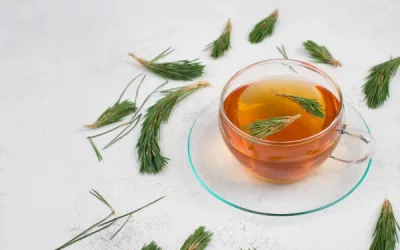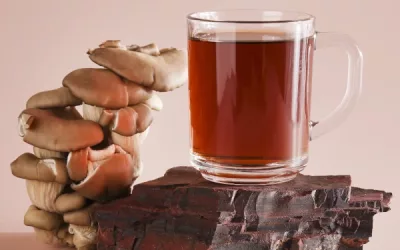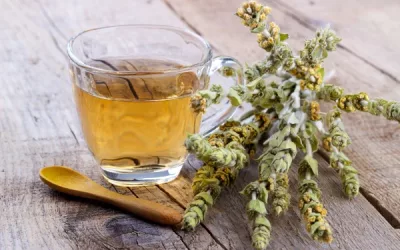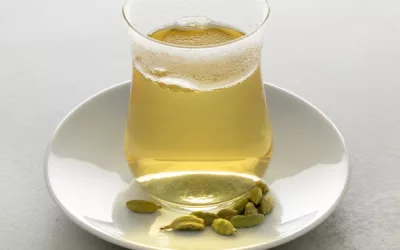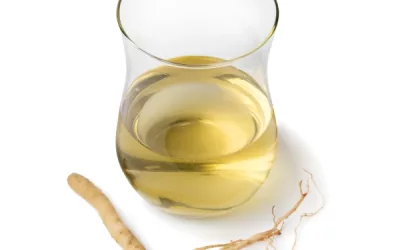Did you know that dandelions, often dismissed as mere weeds, hold a treasure trove of health benefits? As more individuals turn to herbal remedies and sustainable living, understanding how to make dandelion tea becomes essential. This guide not only unveils the remarkable advantages of dandelion tea but also offers practical tips for harvesting, preparation, and incorporating it into your diet. Join me as we delve into the ultimate guide to making dandelion tea, ensuring you can enjoy its earthy flavours and wellness perks with confidence.
In the 16th century, European herbalists began to document the medicinal uses of dandelion. They noted its effectiveness in treating liver issues and digestive problems. The plant’s roots and leaves were often used in tonics and teas to help cleanse the liver and improve digestion.
This historical use underlines the long-standing knowledge of the benefits of dandelion tea.
I remember when I first tried dandelion tea during a wellness retreat. I was sceptical at first, but after a week of drinking it daily, I noticed a significant improvement in my digestion and energy levels.
It was fascinating to experience first-hand how this simple plant could make such a difference. Now, I make it a part of my regular routine, especially after learning more about its numerous health benefits. Give it a try, and you might find it becomes a beloved part of your wellness journey too.
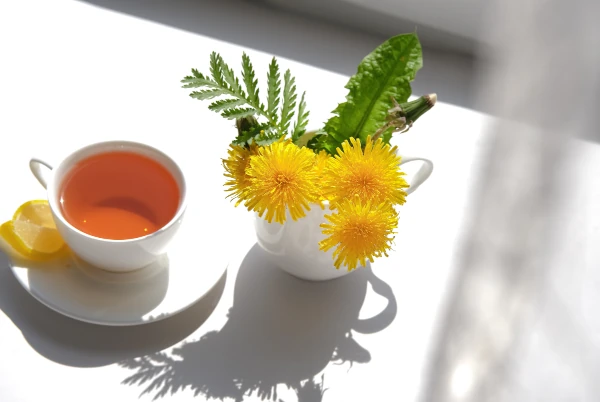
How do you properly harvest dandelions for tea?
Harvesting dandelions for tea can be a delightful experience. You need to know when to harvest, what parts to use, and how to ensure you’re doing it sustainably. Dandelions grow almost everywhere, and harvesting them correctly ensures you get the most out of this herbal remedy.
Whether you forage, grow them at home, or practice wildcrafting, understanding when and how to harvest different parts is key. Below is a table to guide you through different methods of harvesting dandelions, the best times to do so, and tips to ensure safety and sustainability.
Comparison of different harvesting methods
| Method | Best Time to Harvest | Parts Used | Tips for Safe Harvesting |
|---|---|---|---|
| Foraging | Spring to early summer | Leaves | Avoid areas with chemical treatments, wash thoroughly. |
| Foraging | Late summer to autumn | Roots | Dig deep to get the whole root, avoid breaking. |
| Home Gardening | Spring to autumn | Leaves, Flowers | Control pest infestations organically. |
| Wildcrafting | Spring to late summer | Leaves, Flowers | Ensure identification, use sustainable picking methods. |
| Home Gardening | Spring to autumn | Roots | Rotate harvest spots to prevent overharvesting. |
| Foraging | Late summer to autumn | Flowers | Pick fully bloomed flowers, avoid polluted areas. |
| Wildcrafting | Late summer to autumn | Roots | Practice ethical wildcrafting, leave enough plants to regenerate. |
This table compares different methods like foraging, home gardening, and wildcrafting. It shows the best times to harvest, which parts to use, and practical tips for each method. This will help you make informed choices and harvest dandelions safely and sustainably.
How do you make dandelion root tea?
Making dandelion root tea involves a few simple steps to ensure you extract the flavour and benefits of the roots. Here’s a step-by-step guide on how to make it.
- Dig up dandelion roots in late summer to autumn.
- Wash the roots thoroughly to remove dirt.
- Chop the roots into small pieces.
- Roast the chopped roots in an oven at 200°F for 2 hours.
- Store the roasted roots in an airtight container.
You can brew your tea by boiling a tablespoon of roasted root in two cups of water for about 10 minutes. Strain and enjoy your tea hot or cold. Dandelion root tea has a rich, earthy flavour that’s perfect for any time of the day.
How do you make dandelion leaf tea?
Dandelion leaf tea is easier to make and offers a light, herbal taste. Here’s how you can prepare it from fresh or dried leaves.
- Harvest dandelion leaves in spring to early summer.
- Wash the leaves thoroughly.
- Dry the leaves by spreading them out on a clean cloth.
- Store dried leaves in an airtight container.
To make the tea, steep a tablespoon of dried leaves in hot water for about 5-10 minutes. Strain the leaves out, and your tea is ready. You can add honey or lemon to enhance the flavour.
How do you make dandelion flower tea?
Dandelion flower tea is a simple and delicate infusion that highlights the mild sweetness of the flowers. Here’s how you can make it from fresh or dried flowers.
- Harvest dandelion flowers in the morning when they’re fully open.
- Remove any green parts, as they can add bitterness.
- Wash the flowers gently to remove dirt or bugs.
- Dry the flowers by laying them on a clean cloth in a sunny spot.
- Store dried flowers in an airtight container for later use.
To make the tea, steep about a tablespoon of dried or fresh flowers in hot water for 5-10 minutes. Strain the flowers, and your tea is ready. You can add honey or lemon for added sweetness or flavor.
In medieval Europe, herbal remedies were common, and dandelions were frequently used. A notable figure, Hildegard of Bingen, a German Benedictine abbess, wrote extensively about the medicinal properties of plants, including dandelions.
She believed dandelion tea could aid digestion and purify the blood. Her teachings influenced medieval herbal practices and are still referenced by modern herbalists.
From a personal perspective, I remember the first time I made dandelion tea from freshly foraged dandelions. It was early spring, and the fields were bursting with bright yellow flowers. I carefully picked the leaves and roots, following the guidance I’d read.
The process of roasting the roots and drying the leaves was surprisingly therapeutic. When I finally brewed my first cup of dandelion tea, the taste was earthy and refreshing, a connection to nature in every sip.
That experience sparked my interest in herbal remedies and sustainable living, a journey I cherish to this day.
What are the different types of dandelion tea?
So, you fancy a cup of dandelion tea, but you’re stumped on the types? Fear not, my friend, because this wildflower is more versatile than a Swiss army knife. Let’s dive into the world of dandelion tea, where roots, leaves, and flowers each serve up their own flavours and benefits.
Dandelion root tea is your earthy, robust morning pick-me-up. Coffee might be your current go-to, but this guy can easily replace it with a similarly bold taste minus the caffeine jitters. Next, there’s dandelion leaf tea, the lighter cousin, known for its slightly bitter but refreshing flavour.
Perfect for detoxing, given its diuretic properties. Finally, dandelion flower tea offers a milder, sweeter profile that’s more like sipping sunshine in a cup.
How does the preparation method affect the flavour of dandelion tea?
Trust me, the way you prepare your dandelion tea is as crucial as choosing between a rusty spoon and a shiny new ladle to eat your soup. Preparation methods can drastically alter the flavour and benefits.
- Roasting the roots: Roasted dandelion root tea has a nutty, smoky flavour similar to coffee. It’s an excellent substitute for your morning brew.
- Using fresh or dried flower petals: Dandelion flower tea, made by steeping fresh or dried petals, has a sweeter, more delicate taste.
- Brewing fresh or dried leaves: Dandelion leaf tea can be quite bitter if not balanced with a sweetener or mixed with other herbs.
- Additional ingredients: Adding a bit of mint or a splash of lemon can elevate the flavour profile significantly.
- Steeping time: Oversteeping can make your tea too bitter, so stick to a recommended time, usually around 5-10 minutes.
What are the unique benefits of dandelion flower tea?
Now, if you’re thinking dandelion flower tea isn’t much more than a wildflower dressed up in a fancy teacup, think again. The benefits are more enticing than that.
- Loaded with antioxidants: Helps combat oxidative stress and may slow down the ageing process—your skin will thank you.
- Anti-inflammatory properties: Could potentially ease minor aches and pains or tummy troubles.
- Rich in essential vitamins: Vitamins A, C, and K—all the good stuff without the pricey supplement bottle.
- Hormonal balance: May aid in stabilising hormone levels, especially important for those monthly mood swings.
- Heart health: Some studies suggest it might help with cholesterol management.
Flower power, anyone?
Can you mix dandelion tea with other herbal teas?
Why stick to plain when you can jazz it up a little, right? Mixing dandelion tea with other herbal teas can create a blend as impressive as a jazz quartet.
- Mint: Enhances the refreshing element and could ease digestive issues.
- Chamomile: Perfect for calming nerves before bed.
- Ginger: Adds a spicy kick and detox benefits.
- Lemon balm: Amplifies the citrus notes and aids in relaxation.
- Lavender: Creates a soothing, aromatic combo for stress relief.
So, next time you’re mixing teas, don’t be afraid to play the mad scientist. You might concoct your next favourite blend.
Back in medieval Europe, famed herbalist Nicholas Culpeper touted the benefits of dandelion in his 17th-century work “The English Physician.”
He praised it for its ability to cleanse the blood and revitalize the liver—traits that make a strong case for this humble weed’s starring role in your wellness routine.
Turns out, old Nick knew a thing or two about better living, long before smoothies and yoga mats made it trendy.
How do you prepare dandelion tea?
So, you’re itching to dive into the world of dandelion tea, eh? Prepare to be dazzled (or at least mildly amused) by its simple yet earthy charm. We’ll guide you through the step-by-step process, from harvesting to sipping.
Keep your kettle handy, because we’re about to embark on a floral tea journey like no other.
First, you need to get your hands on the main ingredient: dandelions. Both the leaves and roots of this ubiquitous plant are used. Ensure they’re harvested from areas free of pesticides and pollution – roadside dandelions are a no-no.
After plucking those golden beauties, set them aside for a good washing.
How do you prepare dandelion tea? The step-by-step methods
To make dandelion tea, you can either steep the leaves, boil the roots, or do both for a potent mix. Here’s your toolbox and timeline for each technique:
- Equipment Needed: Grab a kettle, a teapot, a strainer, a baking sheet, and a jar. You might also want a mortar and pestle if you’re feeling fancy and want to grind the roots.
- Timing: For leaves, steep them for about 10-15 minutes. For roots, you’ll need to dry them first, ideally in the oven at a low temperature, then boil for around 20 minutes.
- Serving Suggestions: Serve your dandelion tea hot or cold. You can garnish with a slice of lemon, a dash of honey, or even a sprig of mint for that extra zing.
- Tips for Enhancing Flavour: If you find dandelion tea a tad bitter, mix it with other herbal teas like chamomile or peppermint. Roasting the roots before boiling can also add a delightful, coffee-like taste.
What equipment is essential for making dandelion tea?
You don’t need a full-blown lab to brew this tea, but a few essentials are non-negotiable for the best results.
Here’s your gear:
- Kettle: For boiling water, obviously. No kettle, no tea.
- Teapot: To steep the leaves or roots. Keeps things classy.
- Strainer: Essential for separating those pesky particles from your pure liquid gold.
- Baking Sheet: For drying the leaves and roots. This step is crucial if you want to store extras for later.
- Jar: To store your dried dandelion parts. Airtight and ready for the next brew.
- Mortar and Pestle: Optional but ideal for grinding dried roots into smaller pieces for better boiling.
Brewing dandelion tea is all about simplicity with a touch of preparedness. With these items, you’re well-equipped to tackle your dandelion adventure.
How long should you steep dandelion leaves for optimal flavour?
Ah, the art of the steep. Get it right, and you’ll have a cup that’s aromatic and flavourful; get it wrong, and you’re basically drinking pond water.
- Steep Time: Aim for 10-15 minutes. This range ensures you extract the goodies without veering into “why is my tea so bitter?” territory.
- Temperature: Keep your water just below boiling point – around 95°C (203°F). Boiling water can scorch the leaves, and that’s a no-no.
- Quantity: Use about one tablespoon of dried leaves per cup. Adjust according to taste and tolerance for the dandelion’s inherent earthiness.
- Cover Up: While steeping, cover your teapot or cup. It keeps the volatile oils in and enhances the flavor.
By following these guidelines, your tea will bring out the best zest without any nasty side effects.
Are there any tips for making dandelion tea taste better?
We get it – dandelion tea can be an acquired taste. A few tweaks here and there can morph it from “meh” to “mmm.”
Quick Tasting Tips:
- Sweeten the Deal: Add a teaspoon of honey or a drop of maple syrup. It’s a game-changer.
- Citrus Zest: Throw in a slice of lemon or a splash of lime juice. They complement the tea’s natural bitterness beautifully.
- Spice It Up: Cinnamon sticks, a touch of vanilla extract, or a few cloves can add depth.
- Chill Out: Brew it strong, then chill it in the fridge for a refreshing iced dandelion tea. Add ice cubes and maybe a sprig of fresh mint.
- Mix and Match: Blend it with other herbal teas – chamomile, peppermint, or even ginger work wonders.
Being creative with your mix-ins can elevate your dandelion tea from medicinal to marvellous!
Back in the early 20th century, during the Great Depression, foraging became a crucial survival skill. People reconnected with nature and learned to use what they had available. That’s precisely what people did with dandelions.
Known as “poor man’s coffee,” roasted dandelion roots offered a caffeine-free alternative to the real deal. Those who had mastered this craft found not just sustenance but a surprising sense of comfort in simplicity, teaching us that sometimes, the best remedies come straight from the earth.
So, give dandelion tea a whirl. You never know, you might just discover your own slice of leafy bliss.
What does dandelion tea taste like?
Ever taken a bite out of a meadow? Well, sipping on dandelion tea is pretty close to that. Depending on how you make it, it can range from earthy to slightly bitter, with a hint of sweetness. We’re talking about the beverage made from the whole flower, leaves, and roots, and each part adds its own twist to the flavour.
Roasted dandelion root tea vs regular tea
Roasted dandelion root tea is like the adventurous cousin of regular tea. It’s got a more robust, nutty taste. Imagine the flavour profile of coffee mingled with a mild sweetness. This is nothing like your typical black or green tea.
While regular tea is often floral or vegetal, roasted dandelion root tea offers a deep, rich flavour that’s incredibly comforting on a cold day.
How does roasted dandelion root tea compare to regular tea?
- Has a coffee-like bitterness with a caramel undertone
- More earthy and robust compared to the floral notes of regular tea
- Offers a hint of sweetness that regular teas often lack
- Lacks the astringency found in many black and green teas
- Pairs well with a multitude of flavour enhancers like vanilla and cinnamon
Roasted dandelion root tea packs a punch and can be a fantastic caffeine-free substitute for coffee. It can handle milk and sweeteners without losing its essence, making it versatile and enjoyable.
Flavours that can enhance dandelion tea
Enhancing the taste of dandelion tea can make it a lot more palatable if you’re not into its natural flavour. Popular choices for tweaking its flavour include:
- Honey: Adds sweetness and combats bitterness
- Lemon: Refreshes the palate with a citrusy zing
- Mint: Infuses a cool, refreshing taste
- Cinnamon: Introduces warmth and spiciness
- Ginger: Brings a zesty and slightly spicy twist
Adding these flavours can transform dandelion tea into a delightful treat, making it more approachable for those new to herbal teas. Personalising your cup with these enhancers means there’s never a dull mug of tea.
Do people generally enjoy the taste of dandelion tea?
Tell it like it is: dandelion tea is an acquired taste. Some people love it; others, not so much. The divide usually falls along the lines of how much you appreciate earthy and slightly bitter flavours.
- Herbal enthusiasts often rave about its natural taste
- Those new to herbal teas may take time to get used to it
- Adding flavours can make it more universally appealing
- Its unique taste can be off-putting to those expecting traditional tea flavours
- Those keen on healthy, herbal remedies often grow to enjoy it over time
Ultimately, whether or not you enjoy dandelion tea depends on your palate and what you look for in a warm beverage. It might take some getting used to, but it’s worth it for the health benefits.
In the spirit of integrating a bit of history, did you know dandelions have been used medicinally for centuries? Medieval monks brewed dandelion tea as a remedy for various ailments.
The legendary Chinese herbalist Li Shizhen also praised it in his Bencao Gangmu, a 16th-century materia medica. These little yellow blooms have been a big deal for longer than most of us can remember, lending credence to their staying power in the world of herbal remedies.
So, give dandelion tea a shot—you might be joining a long line of satisfied sippers!
Are there any side effects of drinking dandelion tea?
Alright, let’s get this straight: dandelion tea is a hit in the herbal remedy world, but it’s not without its drawbacks. You can’t just pluck those sunny yellow flowers from your lawn and chug them down without considering the potential side effects.
Yes, dandelion tea might be your wellness BFF, but it can also have some unexpected consequences.
Now, that’s not to say dandelion tea is as perilous as, say, skydiving without a parachute. However, if you’re not careful, you might find yourself dealing with some unwelcome surprises.
Buckle up, and let’s dive into the nitty-gritty of allergic reactions, medication interactions, and more.
What should people with allergies to certain plants know before drinking dandelion tea?
First off, if you’re the kind of person who sneezes at the sight of a flower, you might want to tread carefully. Dandelion tea can provoke allergic reactions in some folks, especially those who have sensitivities to certain plants.
- Ragweed, chrysanthemums, marigolds, and daisies are in the mix with dandelions (plant family Asteraceae/Compositae).
- If you react to those plants with itchy skin, sneezing fits, or teary eyes, chances are, dandelion tea won’t be your cup of… tea.
- Symptoms might include hives, skin irritation, and difficulty breathing – that last one sounds just as fun as it is serious.
- It’s always smart to do a patch test with a bit of the tea on your skin before drinking.
- Consulting with an allergist might help you avoid an unintended trip to the A&E.
Knowing how you respond to other plants in the same family can be crucial. It’s better to be safe than sorry, especially when it comes to allergies.
Are there any medications that interact negatively with dandelion tea?
Let’s dabble in the realm of pharmacology for a second. If you’re on medication, tossing back a cup of dandelion tea might not be as harmless as it seems.
- Diuretics could clash with dandelion’s natural diuretic properties – think of it as doubling down and potentially overdoing it.
- Blood thinners might not play well with dandelion tea, either. It can increase the risk of bleeding.
- Antacids, too, can get in on the drama. Dandelion may increase stomach acid, making them less effective.
- Some antibiotics, like ciprofloxacin, might not be on good terms with dandelion tea, reducing its efficacy.
- If you’ve got lithium on your meds list, keep in mind that dandelion affects its excretion, potentially leading to toxicity.
These interactions are like an herbal soap opera – dramatic and possibly dangerous. A chat with your GP is a must if you’re mixing dandelion tea with medications.
How much dandelion tea is safe to drink daily?
Now, for the million-dollar question: how much dandelion tea can you sip on without pushing the limits? Moderation is key, my friends.
- Generally, 1-3 cups per day are considered safe. Any more, and you might be inviting trouble.
- Dandelion roots and leaves have different potencies, so be mindful of which part you’re using.
- Start small, especially if you’re new to the tea world. Gauge how your body reacts before you commit to a pot-a-day regime.
- Be mindful of the diuretic effect, particularly if you’re glued to your desk. Frequent bathroom trips aren’t always conducive to productivity.
- Hydrate well – ironic, I know, but essential. Dandelion tea’s diuretic properties can dehydrate you.
Treat dandelion tea like you would any new addition to your diet. Don’t go overboard and pay attention to your body’s feedback.
Speaking of intriguing stories, let’s talk about Catherine de’ Medici. Back in the 16th century, she was known for her love of herbal concoctions. Her herbalist, Nostradamus – yes, that Nostradamus – often used various plants to keep her in good health.
While there’s no confirmed record of him using dandelion tea specifically, it’s intriguing to think that dandelion’s medicinal properties might have been part of the royal herbal toolkit.
So, next time you brew some dandelion tea, imagine you’re partaking in a centuries-old wellness ritual with a royal touch. Cheers!
How do you store dandelion tea for later use?
Alright, you’ve ventured into the fascinating world of herbal teas and now you’re wondering how to keep your dandelion treasure chest fresh and potent. Worry not; storing dandelion tea isn’t rocket science, but there are a few tricks to know to ensure it’s just as delicious as the day you made it.
Before you shove those dandelion leaves into any old jar, let’s talk drying methods, the best storage containers, shelf life, and a few sneaky tips to maintain that flavour.
When it comes to keeping your dandelion tea stash in tip-top shape, it’s all about how you dry, store, and handle your precious leaves. Drying your dandelion leaves properly is the first step. You’ve got a few options here – sun-drying, air-drying, or using a dehydrator.
Trust me, you don’t want to skip this step unless you enjoy the thrill of mouldy tea. Once dried, you’ll need a solid container – think airtight, opaque, and cool. Give plastic a miss and aim for glass or metal. And if you’re curious about how long these delicate leaves can hold onto their herbal magic, a good rule of thumb is around a year.
But let’s dive a bit deeper, shall we?
How should you dry dandelion leaves for storage?
Drying your dandelion leaves is akin to finding the holy grail of tea storage. Get this wrong, and all your foraging efforts turn into a soggy mess.
- Sun-drying: Lay your leaves out on a clean surface under direct sunlight. Flip them occasionally. It’s eco-friendly but you’re at the mercy of the weather.
- Air-drying: Spread them out in a single layer on a mesh or drying rack. Keep them in a well-ventilated area away from direct sunlight. This takes longer but preserves more nutrients.
- Using a dehydrator: Set your dehydrator to a low temperature (around 95°F or 35°C). This method is quick and ensures your leaves are evenly dried.
- Microwave drying: Only for the impatient! Use short bursts on low power and watch those leaves like a hawk. Quick but not ideal for preserving maximum benefits.
- Oven drying: Set to the lowest temperature and leave the oven door slightly ajar. It’s an efficient way but you’ll need to keep an eye on things.
Drying properly will ensure those leaves retain their flavour and health benefits. Whatever method you choose, crispy leaves that crumble to the touch are what you’re after.
What type of container is best for storing dried dandelion tea?
Now that you’ve dried them, find the right container to store your leafy treasures. You wouldn’t stick a Ming vase in a bin bag, would you?
- Glass jars: These are the best – non-reactive and airtight. Opt for tinted glass to shield from sunlight.
- Tin containers: Perfect for keeping light and air out. Make sure the lid fits snugly.
- Ceramic jars: These work like a charm, provided they have a tight seal. Plus, they look pretty on your kitchen counter.
- Vacuum-sealed bags: Ideal for longer-term storage. Suck out the air to maintain freshness.
- Avoid plastic: It can leach chemicals and affect the taste.
Choose wisely, as the container you pick will help maintain the tea’s flavour and potency. Airtight, dark, and cool – that’s the mantra.
How long can you store dandelion tea before it loses potency?
Even the best-dried, best-stored dandelion tea has an expiry date. Not a scary “Sell by or die!” moment, but more of a “Best flavour before…” guideline.
- Shelf life: Roughly 1 year for the best flavour and potency.
- Signs of ageing: Loss of aroma, colour, and eventual dull flavour. If it starts to smell musty, it’s time to bin it.
- Regular checks: Periodically inspect your stash for any signs of spoilage or loss of scent.
- Rotation: Use up the older batches first to keep your stock fresh.
So, plan your tea consumption well, and keep track of when you dried your batches. Remember, fresher is always better with herbs.
In medieval Europe, dandelions weren’t just pesky weeds; they were prized for their medicinal properties. Herbalists like Nicolas Culpeper sang praises of the dandelion, calling it by its folk name “Pis-en-lit” (yes, “wet the bed” – hilarious, I know) for its diuretic properties.
These early herbalists meticulously dried and stored these leaves, much like you will, ensuring their remedies remained potent. So, as you sip your perfectly preserved dandelion tea, know you’re partaking in a tradition that’s withstood the test of time. Cheers to that!
Can dandelion tea be used in recipes?
Yes, dandelion tea can be more than just a cozy drink at the end of your day. It has a unique earthy and slightly bitter flavour that lends itself to a variety of culinary concoctions. Think beyond the teacup and get creative in the kitchen by incorporating it into your favourite recipes.
Dandelion tea can be a star ingredient in:
- Broths and soups
- Salad dressings
- Marinades
- Cocktails and mocktails
Now, let’s dive into some specific ways to make the most of this versatile herbal elixir.
What are some popular recipes that include dandelion tea?
Popular recipes with dandelion tea aren’t as daunting as you may think. Its adaptability and unique taste make it a delightful addition to many dishes.
- Dandelion Tea Soup: Add brewed dandelion tea to your vegetable or chicken broth for a rich, herby base.
- Dandelion Tea Rice: Replace plain water with dandelion tea when cooking rice for a subtle flavour twist.
- Herb-Infused Salad Dressing: Mix dandelion tea with olive oil, balsamic vinegar, mustard, and herbs for a tangy salad topper.
- Dandelion Tea Poached Chicken: Poach chicken in dandelion tea and spices for a fragrant, tender outcome.
- Tea-Marinated Tofu: Soak tofu in an infusion of dandelion tea, soy sauce, and ginger before cooking.
Culinary creativity knows no bounds with dandelion tea. It offers an unexpected layer of flavour that can elevate even the simplest of dishes.
How can dandelion tea be used in desserts?
Desserts might not be the first thing that comes to mind when you think of dandelion tea, but trust me, this humble herb can work wonders on the sweet end of the spectrum.
- Dandelion Tea Ice Cream: Infuse cream with dandelion tea before churning to give a floral twist to your ice cream.
- Dandelion Tea Syrup: Boil dandelion tea with sugar until it reduces into a syrup. Drizzle it over pancakes, waffles, or pies.
- Herbal Baked Goods: Incorporate brewed dandelion tea into the batter of cakes, muffins, or cookies for a subtle earthiness.
- Panna Cotta: Use dandelion tea as the liquid base in making panna cotta, a creamy Italian dessert.
- Dandelion Jelly: Brew a strong dandelion tea, mix with lemon juice, pectin, and sugar to create a unique jelly spread.
Turn your favourite desserts into showstoppers by simply adding this herbal element, surprising your taste buds along the way.
Can dandelion tea be used in smoothies or other beverages?
Absolutely! Smoothies and other beverages can benefit greatly from the earthy undertones of dandelion tea. It’s like adding a secret health boost without compromising on taste.
- Dandelion Tea Smoothie: Blend brewed dandelion tea with your choice of fruits, veggies, and a bit of honey.
- Herbal Latte: Mix dandelion tea with hot milk (or a milk alternative) and a dash of cinnamon for a soothing latte.
- Iced Dandelion Tea: Chill brewed dandelion tea, add a slice of lemon, and a touch of honey for a refreshing drink.
- Mocktail Magic: Combine dandelion tea with sparkling water, lime juice, and fresh mint to create a fancy mocktail.
- Fruit Infusion: Steep dandelion tea, chill it, and mix with fruit juices like apple or apricot for a punchy infusion.
Beverages can become an adventurous playground when you add the complex notes of dandelion tea, ensuring each sip is both delicious and beneficial.
During World War I, when tea supplies were hard to come by, clever Brits resorted to brewing beverages from local plants, including—yep, you guessed it—dandelions. They were thrifty and resourceful, making the most of what nature had to offer.
Dandelion tea was a staple for those keen on staying connected to their roots (pun intended) and ensured everyone still had a warm, comforting drink despite the challenges. This piece of history just proves that with a bit of creativity, the humble dandelion tea has held its weight through thick and thin.
Conclusion
As I reflect on the journey of discovering how to make dandelion tea, I am reminded of the incredible health benefits this humble plant offers. From its potent antioxidant properties to its ability to support digestion and liver health, dandelion tea is indeed a powerhouse of wellness.
I’ve learned how to harvest these vibrant yellow flowers sustainably, ensuring I respect both the environment and the rich tapestry of herbs around us. The diversity of dandelion tea—from the bitter yet invigorating root brew to the delicate floral infusions—highlights just how versatile this herbal remedy can be.
The various preparation techniques provide an opportunity for personal expression, allowing us to tailor the taste and experience to our preference, all while considering the unique benefits each part of the plant yields.
There’s a special satisfaction in preparing and enjoying a cup of dandelion tea, knowing that it was crafted from nature’s bounty.
Take it a step further and explore the creative culinary uses of dandelion tea in your kitchen. Whether enhancing a smoothie, infusing a dessert, or simply sipping the invigorating brew, your culinary possibilities are boundless. However, it is vital to remain mindful of the potential side effects and storage best practices to ensure a safe and enjoyable experience.
Ultimately, the exploration of dandelion tea is not just about making a beverage; it’s about embracing the principles of natural wellness and sustainability. As we delve into the world of herbal remedies, let’s ponder a thought: what other treasures from nature await our discovery, patiently waiting to be integrated into our lives?
In the words of the wise herbalist, “Nature itself is the best physician.” So, let us continue to learn, foraging our way back to a deeper connection with the earth and its countless gifts.
Resources
- Diverse biological activities of dandelion
- The potential of dandelion in the fight against gastrointestinal disorders
- New Perspectives on the Effect of Dandelion, Its Food Products and Extracts on the Cardiovascular System
- Pro-health activity of dandelion (Taraxacum officinale L.) and its potential health benefits
- Dandelion Tea: Is It Good for You?
- Dandelion: Health benefits, research, and side effects
- Dandelion: Health Benefits and Side Effects
- Side Effects of Drinking Dandelion Root Tea
- Dandelion | Memorial Sloan Kettering Cancer Center



